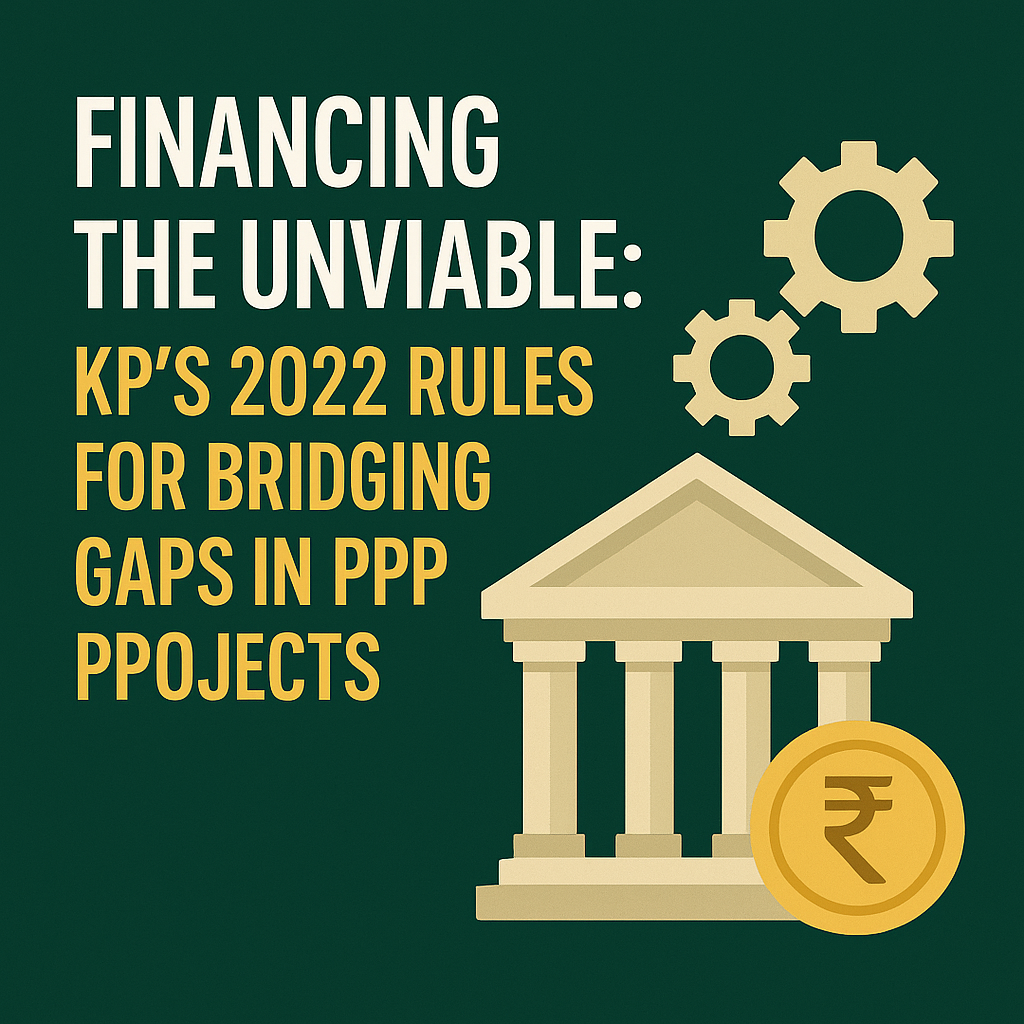
The Government of Khyber Pakhtunkhwa has taken a landmark step in catalyzing private investment in public infrastructure and services through the enactment of the Khyber Pakhtunkhwa Public Private Partnership (Viability Gap Fund) Rules, 2022. Designed under the overarching framework of the KP Public Private Partnership Act, these rules institutionalize the management, financing, and governance of Viability Gap Funding (VGF)—a critical fiscal tool for unlocking commercially viable yet socially essential infrastructure projects.
The VGF mechanism acknowledges a recurring challenge in the infrastructure sector: certain projects, while being economically and socially justified, may not attract private sector participation due to financial unviability in the short term. The KP VGF Rules directly address this gap by laying out a clear roadmap for the assessment, financing, disbursement, and monitoring of public financial support to eligible PPP projects.
The rules establish the Viability Gap Fund as a distinct funding window within the provincial financial framework. It is designed to provide targeted subsidies to PPP projects that meet the criteria of strategic relevance, socio-economic impact, and demonstrable need for public support. The fund may finance up to 40% of the capital cost of a PPP project, with an option to offer operational subsidies in limited cases—ensuring that public funds are utilized to catalyze, not replace, private capital.
A key strength of the rules lies in their rigorous governance model. The fund is overseen by a high-level VGF Committee comprising the Additional Chief Secretary (Chair), Secretaries of Finance, Law, and relevant administrative departments, as well as the CEO of the PPP Unit. This multi-tiered oversight structure ensures that decisions are well-informed, transparent, and anchored in both technical and policy considerations.
Procedurally, the rules mandate a detailed screening of projects by the PPP Unit to determine VGF eligibility. Projects must be aligned with provincial development priorities, pass a value-for-money test, and undergo a viability assessment that quantifies the funding gap. Only those that are competitively procured and demonstrate significant service delivery outcomes are considered for VGF support. The rules also stipulate mandatory due diligence, approval thresholds, and disbursement protocols—adding layers of fiscal discipline and risk management to the process.
Moreover, the rules embed accountability through strict monitoring and evaluation mechanisms. Projects receiving VGF are subject to performance audits, milestone-linked disbursements, and contractual obligations ensuring efficient use of funds. These checks reflect the government’s commitment to safeguarding public resources while enabling market-driven solutions to public service delivery.
The institutional architecture further empowers the PPP Unit as the secretariat of the VGF Committee, responsible for technical appraisals, documentation, and coordination with line departments and project developers. This role underscores the growing capacity of KP’s PPP ecosystem to deliver complex, cross-sector projects with high standards of financial, legal, and operational compliance.
By codifying the rules for Viability Gap Funding, Khyber Pakhtunkhwa has signaled its readiness to de-risk infrastructure development and attract long-term private capital into sectors such as transport, urban services, health, education, and energy. The rules are both a fiscal instrument and a confidence-building measure for private investors, who can now rely on predictable, rules-based support when entering into partnerships with the public sector.
As KP continues to modernize its infrastructure and expand service delivery through innovative financing, the Viability Gap Fund Rules, 2022, represent a foundational policy milestone. They elevate the province’s public financial management framework by combining strategic public investment with private sector efficiency—an approach that could inspire replication across other provinces in Pakistan.
This Article was published at www.publicfinance.pk.
